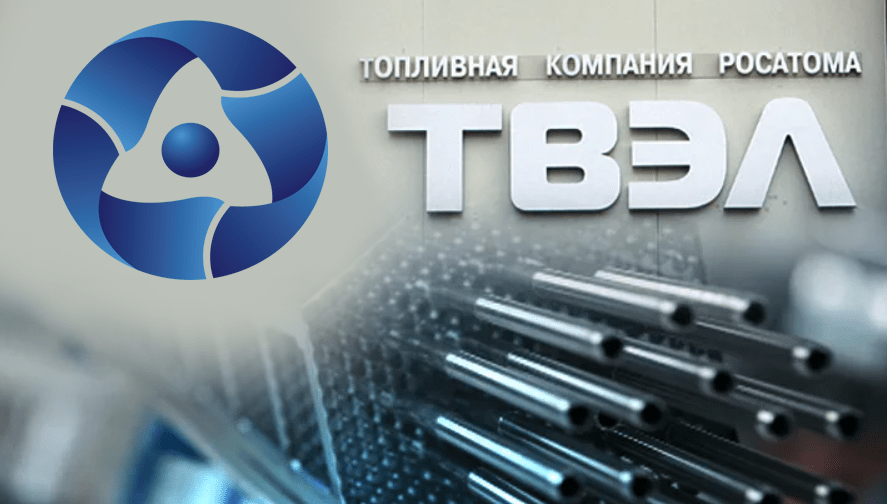TVEL JSC
To share:
Тип проекта
Моделирование системы управления цепочками поставок (концепция, алгоритмы планирования и мониторинга, функциональные требования к поддерживающим модель ИТ-системам). Дорожная карта реализации.
TVEL Fuel Company — Russian manufacturer of nuclear fuel, a production holding company that is part of the Fuel Division of Rosatom State Corporation. It includes a number of enterprises in 10 regions of Russia for the fabrication of nuclear fuel, conversion and enrichment of uranium, production of gas centrifuges, as well as research and development organizations.
It occupies 17% of the global nuclear fuel fabrication market and provides fuel for every sixth power reactor in the world.
TVEL Holding also supplies non-nuclear products to the Russian and global markets: chemical technologies, metallurgy, power storage, mechanical engineering, and other products, including superconducting materials.



Компания «Райтстеп» реализовала проект по построению модели СПМ Цепочек Поставок ТВЭЛ (SPM CPU).
Project goal - increase the reaction speed and efficiency of the entire fuel element CP TVEL by significantly improving the speed and visual quality of planning.
The project developed a system model (concept, planning and monitoring algorithms, and defined functional requirements for IT systems supporting the model). The SPM CPU model covers the following areas of the TVEL CPU, with a detailed description (up to processes and algorithms) of solutions for "complex" locations of the entire chain. A roadmap for the implementation of the TVEL CPU SPM has been defined.
Features of production and logistics chains (PLCs)
A complex supply chain: numerous and inherently diverse processes: from process-based compounding to piece-by-piece discrete production along the entire contour of cooperation.
Decision: A complex hierarchical resource production and logistics model (PLM) has been developed, where resources are sites, workshops, transport, warehouses, and so on.
- Disparate internal IT systems in factories – different approaches to NSI codification.
Decision: maintaining the master data of regulatory and reference information in the SPM.
- Complex CPU: multiple rework operations associated with different stages of transportation from plant to plant, with the need to maintain, plan and track a single product composition (SI).
Decision: maintaining end-to-end SI in the SPM CPU with various scheduling parameters, including
- creating a "fixed" output plan (MPS) for semi-finished products;
- setting non-domestic (non-domestic) resource limits for production, transport, and warehouse "redevelopments";
- with the ability to automatically create the composition of products in the supply chain, both through the conversion of SI of processing plants, and through manual input.
- The need for two types of supply Chain planning:
- Synchronizing scheduling at the CPU input/output level.
- Planning the sequence of execution of plans within the CPU site ("node") by "production types", or even more detailed.
Decision: a complex 2-level resource SI is used, indicating material, production, warehouse, transport, and other resources, with their numerous parameters for optimization.
- Different processing stages (by type of production, management, etc.), different horizons and planning requirements. The need for order-based planning, taking into account capacity utilization.
Decision: the need for planning based on a single, end-to-end CPU SI but using different algorithms for different CPU nodes: APS, MPS, MRP, DRP, ROP. With the main optimization criterion for the fastest order fulfillment, but taking into account campaigns (batch production).
- The need to monitor the implementation of the production plan for all stages, and in the context of deviations from the directive (planned) launch/release dates, for all" stages " of the CPU, under consumer orders.
Decision: 2 versions of plans (directive, calculated), monitoring of the entire CPU.
- Restrictions on the execution of the plan related to the use of returnable and recyclable containers and / or transport.
Decision: modeling and planning of the processes of container return and delivery of containers from the client in the C CPU. Containers are represented as returnable goods and resources.
- Use of a limited number of vehicles.
Decision: automatic planning and accounting for transport resource constraints (auto, railway), including return times.
- Production restrictions of factories "pieces/period", which cause the order to be completed in several "releases".
Decision: fuel assembly production planning, taking into account restrictions, according to the production cycle - "pieces/period", with" pulling " under the production cycle planning for the production and/or supply of semi-finished products and components of DSE.
- Production of semi-finished products by campaigns (push-through).
Decision: automatic reallocation of expected arrivals between prioritized fabrication needs.
- The need to provide factories "Just in time" for the release cycle, during batch production (campaigns).
Decision: consolidate incoming "time-based" launch/release batch requirements based on campaigns and auto-reallocation.
- Variability in the production of semi-finished products: sites, incoming raw materials, technological processes. The need to balance output in order to achieve uniform loading of sites and capacities across sites.
Decision: maintaining a "variable SI" with automated selection of a specific option and calculating the plan based on its parameters. As well as balancing capacities, determining the output plan and fixing it (MPS volume and calendar planning) for the next "frozen" period. Planning optimal launch batches.
